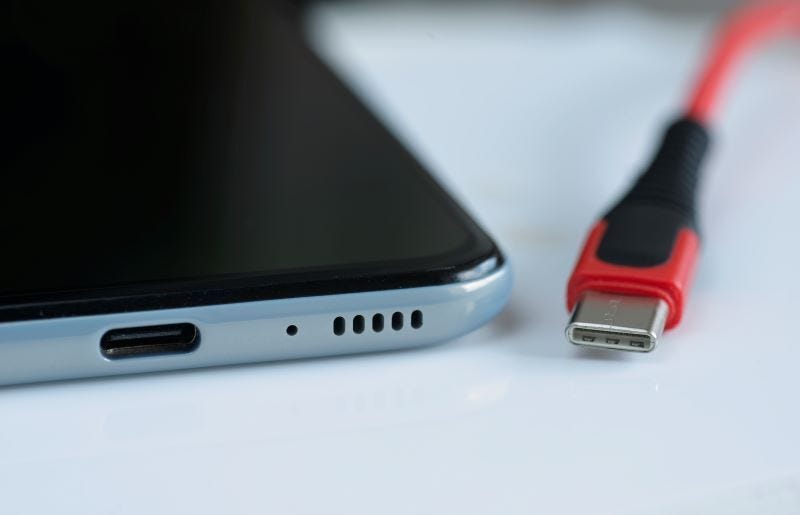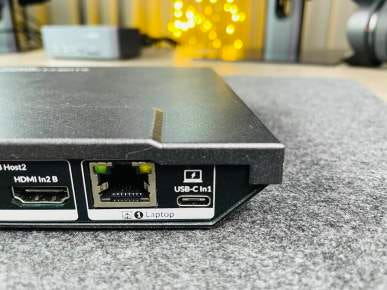USB-C vs. Thunderbolt: What’s the Difference?
Introduction
In the ever-evolving world of technology, the race to create faster, more efficient connectivity solutions is ongoing. USB-C and Thunderbolt must be the connection types you’re familiar with. These two interfaces have revolutionized the way we connect and transfer data between devices, but they are often misunderstood or mistaken for each other.
In this blog, we will delve into the key differences between USB-C & Thunderbolt to understand their unique capabilities and different use cases.
USB-C: The Universal Connector
USB-C, short for “Universal Serial Bus Type-C”, is a groundbreaking connector that has rapidly become the standard for modern devices. Its defining feature is its symmetrical, oval-shaped design, which allows for reversible plug orientation.

Data Transfer Speeds
USB-C boasts impressive data transfer speeds. The latest iteration, USB 3.2 Gen 2×2, can achieve up to 20 Gbps, making it ideal for transferring large files quickly and efficiently.
You may be interested: USB-A vs. USB-B vs. USB-C: What Are the Differences?
Power Delivery
One of the most significant advantages of USB-C is its Power Delivery (PD) feature. This allows devices to provide power to peripherals or charge connected devices. Depending on the device and cable, USB-C can deliver up to 100W of power, making it possible to charge laptops, smartphones, and other power-hungry gadgets.
Universality
As the name suggests, USB-C is universal and can connect to a wide array of devices, including smartphones, laptops, tablets, external hard drives, and even certain gaming consoles.
Thunderbolt: The Powerhouse Connector
Developed by Intel in collaboration with Apple, Thunderbolt has been a game-changer in high-speed data transfer and connectivity. Although physically similar to USB-C, Thunderbolt offers some distinct advantages over its counterpart.

Data Transfer Speeds
Thunderbolt blows USB-C out of the water when it comes to data transfer speeds. The latest iteration, Thunderbolt 4, provides a staggering 40 Gbps, twice as fast as the fastest USB-C standard. This lightning-fast speed is perfect for professional applications like video editing and transferring large media files.
External GPU Support
Thunderbolt supports external GPU (eGPU) solutions, allowing users to boost the graphics performance of their laptops and desktops by connecting an external graphics card. This feature is especially valuable for gamers and professionals in graphics-intensive fields.
Daisy-Chaining
Another unique feature of Thunderbolt is daisy-chaining. With this capability, you can connect multiple Thunderbolt devices in a series, creating a chain of peripherals linked together. This simplifies cable management and reduces clutter on your desk.
You may be interested: How to Connect Multiple Monitors with MST?
Compatibility
Thunderbolt is not as universal as USB-C since not all devices are equipped with Thunderbolt ports. However, it is backward compatible with USB-C devices, so you can still use Thunderbolt peripherals with a USB-C port.
The Compatibility Conundrum
One of the primary sources of confusion between USB-C and Thunderbolt is their physical similarity. Many devices feature a USB-C port, but that doesn’t necessarily mean they support Thunderbolt. When purchasing accessories or peripherals, it’s crucial to check the specifications to ensure compatibility with your device.
Conclusion
In conclusion, USB-C and Thunderbolt are both cutting-edge connectivity solutions. USB-C stands out as the universal connector, providing fast data transfer speeds, power delivery capabilities, and widespread compatibility.
Thunderbolt emerges as the powerhouse connector, offering unparalleled data transfer speeds, eGPU support, and daisy-chaining capabilities.
The decision between USB-C and Thunderbolt largely depends on your specific needs and use cases.
Source: https://www.avaccess.com/blogs/guides/usb-c-vs-thunderbolt/

